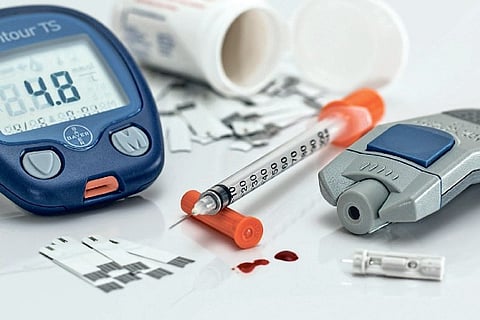

London
Insulin resistance is when the body's cells don't respond properly to insulin and can't easily take up glucose from blood a key feature of T2D and levels vary from patient to patient.
The higher the insulin resistance, the greater the risk of stroke, revealed the study led by a joint team at the Karolinska Institute, Gothenburg University and the National Diabetes Registry in Sweden.
The team used estimated glucose disposal rate (eGDR) as a measure of insulin resistance. eGDR has previously been shown to be a good proxy for insulin resistance and is calculated using a formula that factors in a patient's waist circumference, HbA1c (average blood sugar level) and whether they have high blood pressure.
Health records were used to calculate the eGDR of 104,697 T2D patients in Sweden. They were followed up for an average of 5.6 years, during which 4,201 (4 per cent) had a stroke.
Those with the lowest insulin resistance (the highest eGDR) were 40 per cent less likely to have a stroke than those with the highest insulin resistance.
The study also found that higher insulin resistance was linked to a higher risk of death after a stroke. Those with the lowest resistance were 28 per less likely to die during the follow-up period than those with the most severe insulin resistance.
Further analysis showed high blood pressure to be more strongly linked to stroke than waist circumference or HbA1c.
"We found that in individuals with type 2 diabetes, a low eGDR, a simple measure of insulin resistance, was associated with an increased risk of stroke and mortality," said Alexander Zabala from the Karolinska Institute.
"eGDR could be used to help T2D patients better understand and manage their risk of stroke and death," Zabala added.
Visit news.dtnext.in to explore our interactive epaper!
Download the DT Next app for more exciting features!
Click here for iOS
Click here for Android